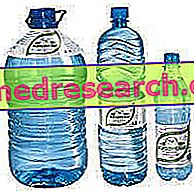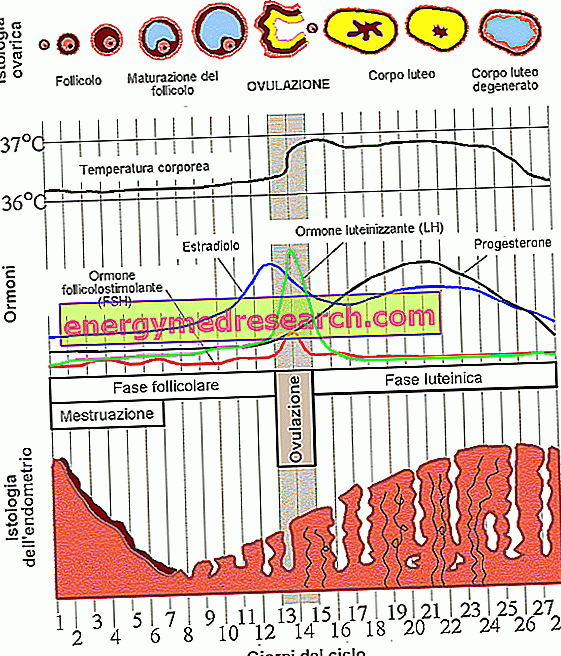Importance of adequate hydration in sport and in everyday life
Hydration is a fundamental part of nutrition. Water is in fact an essential nutrient because the quantity produced with the metabolism (about 350ml / day) is not sufficient to cover the daily requirement.
The water balance depends on maintaining the balance between the incoming and outgoing volume from the body. This balance is regulated by the hypothalamic center of thirst, which regulates the amount of water to be ingested, and by the antidiuretic hormone, ADH, which increases the reabsorption of water in the kidney.
Dehydration decreases plasma volume, cardiac activity, sweating, cutaneous blood flow, and the ability to resist.
WATER REQUIREMENT and HYDRATION

In basic physiological conditions (rest), at room temperature (18-20 °) water losses are less than 1 ml / min. With physical activity and the increase in ambient temperature these losses due to sweating can reach 15-25ml / min.
THE CHILD IS PARTICULARLY AT RISK OF DEFICIENCY due to the higher percentage of body water and its faster turnover.
THE ELDERLY IS PARTICULARLY AT RISK OF DEFICIENCY as the thirst stimulus fades with advancing age.
THE SPORTSMAN IS PARTICULARLY AT RISK OF DEFICIENCY due to the greater amount of sweat produced during sports activities. It is estimated that in the person who practices physical activity, 1 ml of water is required for each calorie of energy expenditure.
Water losses if not adequately compensated determine hypohydration, that is reduction of water in all the compartments of the organism, particularly the circulatory one.
PHYSICAL EXERCISE AND WATER REPLACEMENT
During physical exercise the increased production of energy by muscle cells leads the individual to increase his body temperature. This excess heat is a limiting factor on sports performance and must be eliminated. Therefore, some compensation mechanisms are implemented to maintain body temperature within the natural physiological limits (around 37 °):
IRRADIATION: since our body is warmer than the surrounding objects it loses energy radiating heat in the form of thermal radiation
CONDUCTION: a small amount of heat is transmitted from the deeper layers of the skin to the more superficial ones by conduction and from there to the surrounding air particles.
CONVENTION: based on the speed with which the air near the body surface is exchanged
EXPIRED AIR: responsible for about 10% of total heat losses
TRANSPIRATION: responsible for about 35% of total heat losses. The evaporation of sweat produced depends on three factors: the skin surface exposed to the environment; the temperature and humidity relative to the environment area; convective air currents around the body
A GOOD 10% HEAT IS THEREFORE ACCUMULATED resulting in a significant increase in body temperature.
HYDRATION AND REHYDRATION
Before the physical exercise : the administration of liquids must begin already before the exercise to guarantee an optimal state of hydration in the moment of the effort. It is not recommended to take large quantities of plain water in the 45-60 minutes prior to the effort (because it can stimulate diuresis and the consequent elimination of liquids), for the same reason it is not recommended to take alcohol or caffeine.
During the exercise: reintegration must take into account:
of the environmental characteristics in which the work is carried out (temperature, humidity, ventilation)
type of muscular work (heavy, light, speed or resistance)
used clothing
The contribution of 1/4 of a liter every 15 minutes can still be considered optimal.
After exercise: it is important to take liquids to avoid chronic hypohydratation, to allow recovery of glycogen stores and in general to restore a balance within the body.
THE IDEAL DRINK
The ideal drink must have different characteristics: first of all it must have a pleasant taste, it must be easily absorbed but without causing gastrointestinal problems and must help as much as possible to optimize performance.
To be quickly absorbed the water must be moderately chilled (about 10 °), it must not be absolutely hyperosmolar and must contain a minimum quantity of carbohydrates (5-8%) not exceeding 10%.
DID YOU KNOW THAT ... You can drink up to about 9.5 liters of water a day. Once this threshold is exceeded, problems can arise that are also quite serious for health due to marked alteration of electrolyte concentrations in organic fluids (hyponatremia). Exemplary is the case of a dead athlete, due to hyponatriemic encephalopathy, during the Boston marathon for drinking 15 liters of fluids during the 5-6 hours of her run.
Conversely, weight loss in the form of liquids can cause:
- 1% of weight lost = body temperature increase
- 3% of weight lost = decreased physical performance
- 5% of weight lost = GI disorders, heat exhaustion
- 7% of weight lost = hallucinations
- 10% of weight lost = circulatory collapse
Can you lose fat with sweat?



